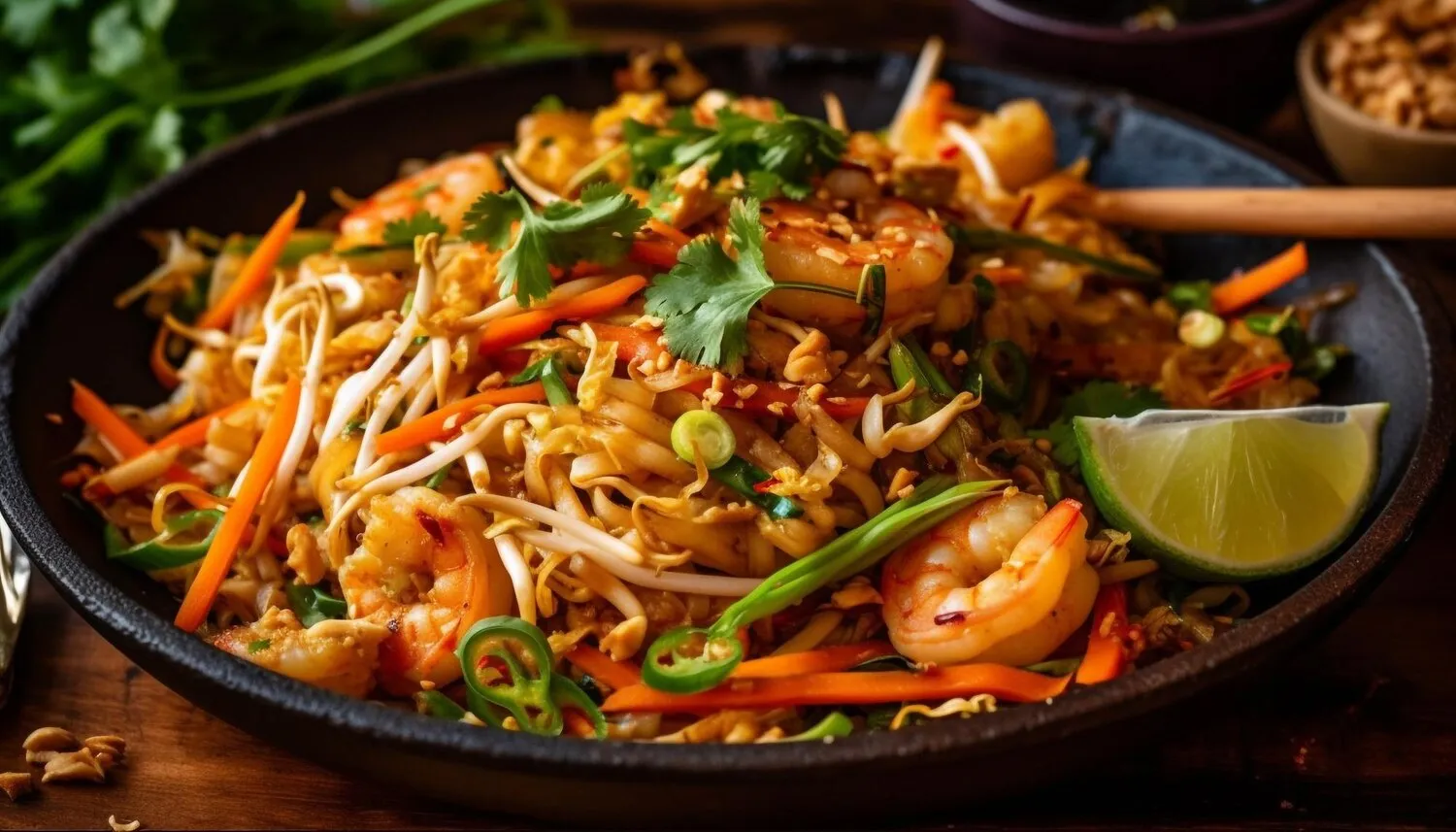
Pad Thai
A stir-fried rice noodle dish, commonly served as a street food and at most restaurants in Thailand. It is made with soaked dried rice noodles, which are stir-fried with eggs and chopped firm tofu, flavored with tamarind pulp, fish sauce, dried shrimp, garlic or shallots, red chili pepper and palm sugar, and served with lime wedges and often chopped roasted peanuts.
Nutrition Facts
* The % Daily Value (DV) tells you how much a nutrient in a serving of food contributes to a daily diet. 2,000 calories a day is used for general nutrition advice.
Pad Thai's creation is attributed to Plaek Phibunsongkhram, Thailand's prime minister in the 1930s. As part of his nation-building efforts, he promoted Pad Thai to foster a sense of national identity and reduce rice consumption. The dish was designed to be a nutritious and inexpensive meal that could be easily prepared by street vendors, quickly becoming a popular national dish.
Pad Thai is more than just a dish; it's a symbol of Thai identity and culinary ingenuity, often enjoyed as a street food staple and restaurant favorite.
Street Food Icon
Pad Thai is ubiquitous on Thai streets, sold by countless vendors using carts and small stalls. The affordability and quick preparation make it a popular choice for locals and tourists alike.
National Dish
While not officially designated as such, Pad Thai is widely considered Thailand's national dish, reflecting the country's culinary heritage and appealing to a global audience.
Culinary Adaptability
Pad Thai's recipe is quite flexible, with variations including different protein sources (chicken, shrimp, tofu), and vegetable additions, catering to diverse dietary preferences and regional ingredients.
Pad Thai is a symphony of sweet, sour, salty, and umami flavors, achieved through a balance of key ingredients.
The sweetness comes from palm sugar, the sourness from tamarind paste, the saltiness from fish sauce, and the umami depth from these same ingredients. These core flavors are then complemented by the textures of stir-fried rice noodles, crunchy bean sprouts, firm tofu, and roasted peanuts. Additional ingredients such as shrimp, chicken, or pork contribute their own distinctive flavors and textures to the dish. Lime wedges, cilantro, and chili flakes offer a refreshing and spicy counterpoint.
Tamarind Paste is Key
Use high-quality tamarind paste for the distinctive sour flavor. Fresh tamarind pulp offers the best flavor, but prepared paste is a convenient alternative. Avoid tamarind concentrate which is too strong.
Noodle Perfection
Soak the rice noodles in warm water until pliable but not mushy. Over-soaked noodles will fall apart during cooking. Quickly rinse the noodles with cold water before cooking, it helps prevent sticking.
Wok Hei (Breath of the Wok)
Use high heat and a wok to achieve the characteristic smoky flavor known as 'wok hei.' Stir-fry the ingredients quickly and efficiently to prevent burning.
Balance the Flavors
Taste and adjust the sauce to achieve the perfect balance of sweet, sour, salty, and umami. Each person may prefer the sauce more sweet, sour or salty so taste and adjust to personal preference!
Explore additional Noodles dishes and restaurants
Explore NoodlesDiscover top dining spots and culinary experiences in Drogheda.
Explore DroghedaLearn more about the food culture, restaurant scene, and culinary heritage of Ireland.
Explore Ireland